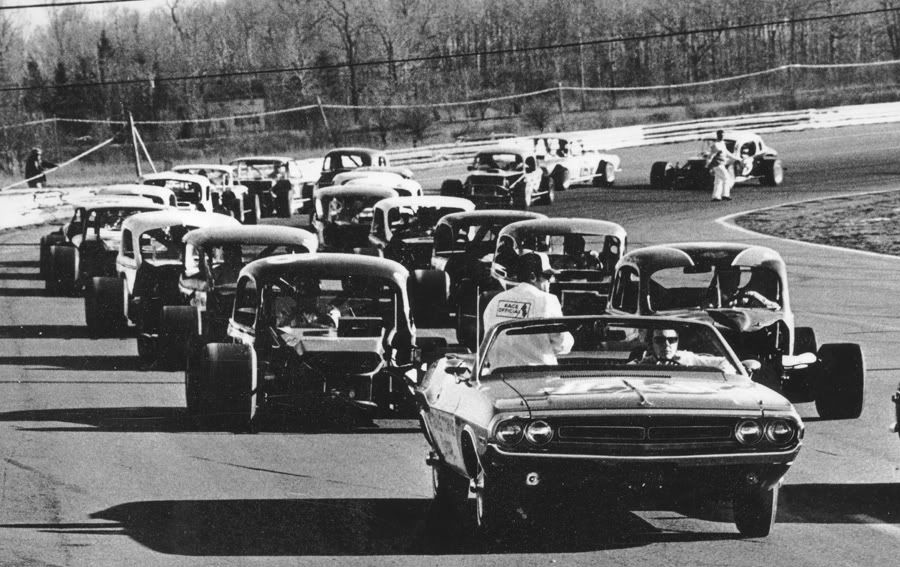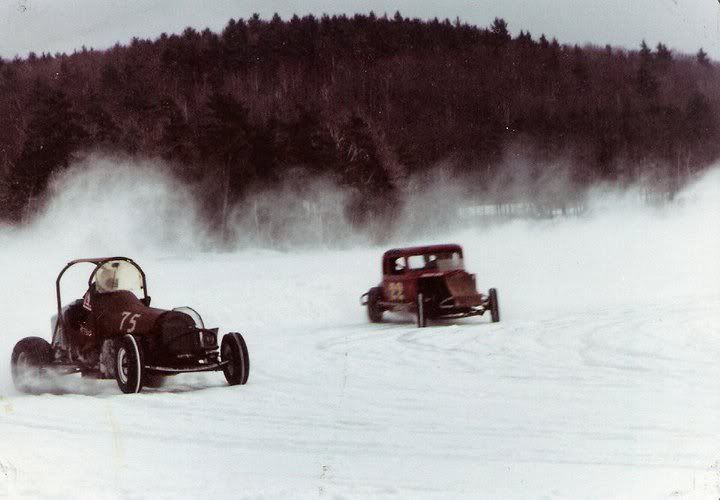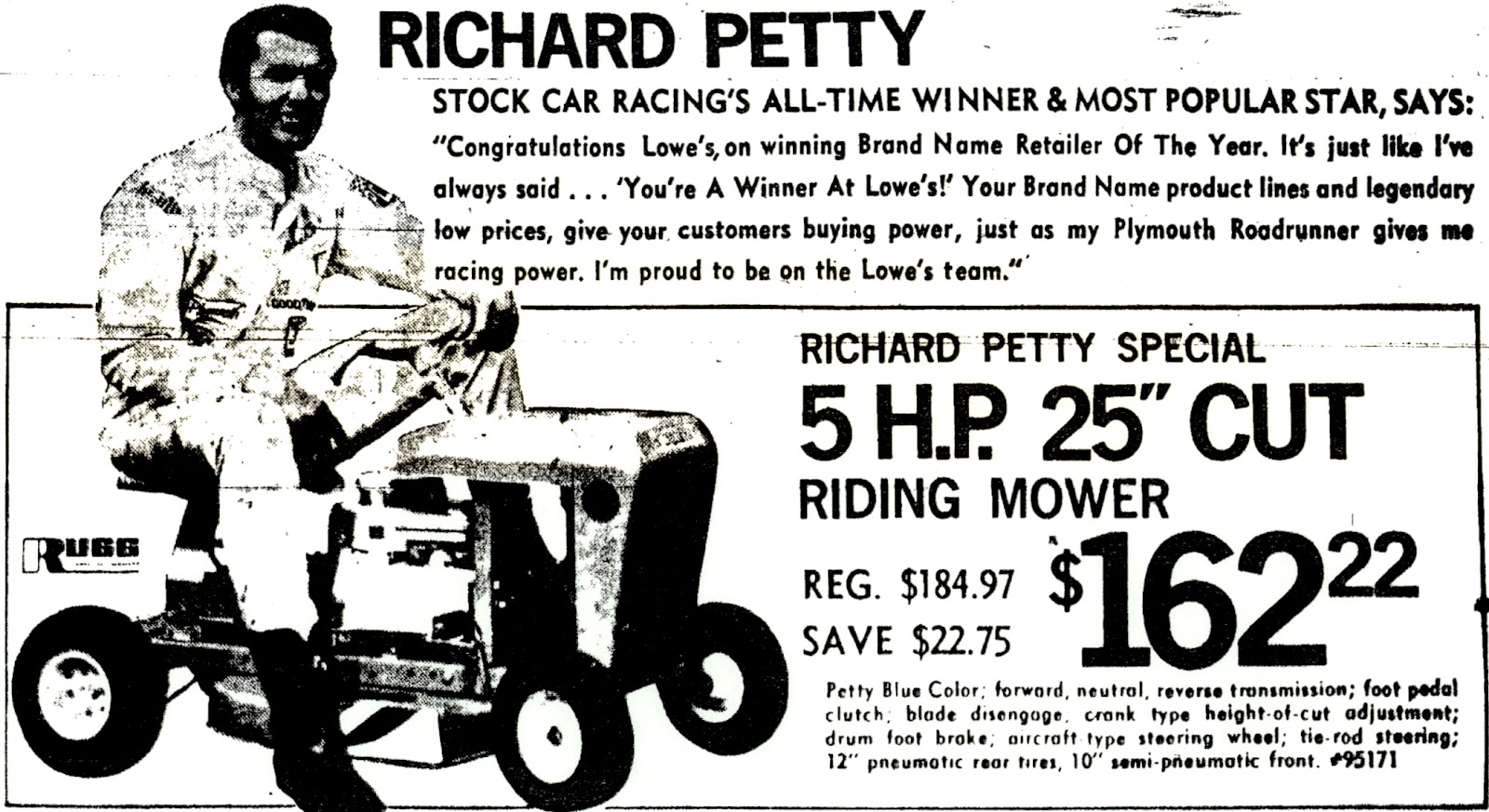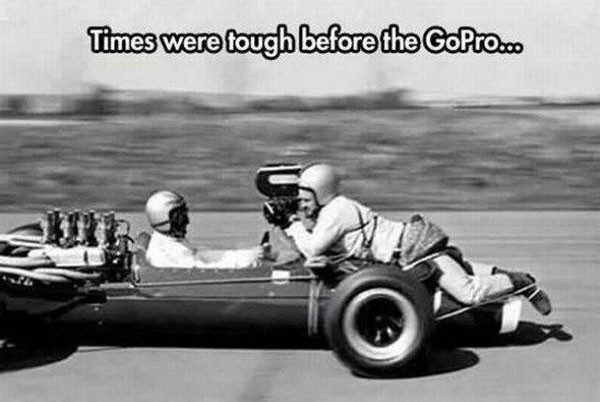You are using an out of date browser. It may not display this or other websites correctly.
You should upgrade or use an alternative browser.
You should upgrade or use an alternative browser.
Vintage Racing Photos
- Thread starter StandOnIt
- Start date
Win on Sunday, sell it gently used on Monday?

February 11, 1951, Hudson wins the Daytona Beach NASCAR race. Marshall Teague starts in the number six position, and takes the lead from Tim Flock's Lincoln with 12 laps to go. The lettering on the sides of the Hudson are painted with tempura paint, and the tape on the front and windshield header are there to protect the paint from the sand. This Hudson was to be sold at the dealership after the race!


February 11, 1951, Hudson wins the Daytona Beach NASCAR race. Marshall Teague starts in the number six position, and takes the lead from Tim Flock's Lincoln with 12 laps to go. The lettering on the sides of the Hudson are painted with tempura paint, and the tape on the front and windshield header are there to protect the paint from the sand. This Hudson was to be sold at the dealership after the race!
Marty Robbins, country singer. Buddy Baker told a story about Marty. He said Marty wasn't a front runner, but at Daytona one year when he and Buddy were driving in a race, he said Marty passed him like he was sitting still. Marty ran all the way up front and ran off from the rest of them. He backed off after a while. After the race they inspected Marty's car and he had pulled out the restrictor plate. they fined the heck out of him. Marty said to Buddy, "I just wanted to see what it felt like to outrun everybody.
View attachment 6348
Buddy might not be remembering that story quite right, according to several other accounts I've read (that seem to agree with each other).
The track was Talladega, not Daytona. 1972.
It wasn't a restrictor plate (NASCAR didn't start using those until 1988) - it was restrictor rings inside the carburetor’s throats ("barrels"). They were sanded down and held in with glue, which dissolved after gasoline passed through, allowing them to fall out (he used wire to keep them in the intake manifold).
Marty intended it as a prank - he wanted to see the looks on the faces of drivers like Richard Petty when he passed them, although it is true that he "wanted to see what it felt like to outrun everybody".
Marty admitted that the motor was illegal after the race. One account said he dropped out of the race instead of finishing. NASCAR's fine was $250. Marty didn't accept his winnings or points or the "Rookie of the Race" award he was offered.
Marty was a good racer and a better singer. Other drivers said he was quite competent, but he never had enough sponsorship or time to race NASCAR seriously enough to run up front.
Here is another version, take your pick.
http://www.stockcarracing.com/thehistoryof/33078_racing_career_marty_robbins/
Bending the Rules
Talladega also played a part in one of the most talked-about Marty Robbins racing stories ever. Ronny says the story has never been told in its entirety, and he wants to set the record straight.
Bobby and Eddie Allison have taken the heat for this years, but it was really Daddys idea all the way, Ronny says. The only thing Ed did was help him get it through tech. I had just gotten out of the service and went to visit him in Bryan, Texas. Im knocking on his motel door and hadnt seen him in a year or so, and its Hey! Come on in. Have I got something to show you!
I follow him over to the sink, and theres a carburetor sitting in it. He says, Take this hammer and knock on these rings. The restrictor rings had a knurlingthey went in one way and wouldnt come out. I hit them and said, Well isnt that what they are supposed to do?
He says excitedly, Yeah! Now take this gasoline and pour a little on them. He had a small squirt bottle, and about 15 seconds later I hear plink, plinkall four of them dropped out.
I said, Why do you want them to do that? He said, Because I want to have some horsepower!
It really was kind of ingenious. He had sanded the knurlings down and glued them in with airplane glue. When they ran through tech, they had a little metal rod with a hook on it that went around the butterfly to measure the bore. So what he did was go out in practice to get the jetting right, and he used a motorcycle spoke to keep the loose restrictors from entering the ports. They just bounced around the bottom of the manifold. He qualified legally at 174 mph; during the race he ran 191. To him it was a harmless prank. The only reason he wanted to do it was to be able to pass guys like Richard Petty and have them scratch their heads. He always intended to tell them about it.
Marty and Ronny told NASCAR they had carburetor trouble and got permission to switch them. Then they pushed the car to the starting line to get it past inspection on race morning. When they fired it, it blew all kinds of black smoke for a few seconds. When it cleared, the car began to roar. David Pearson and Buddy Baker were just running away with the race.
Daddy would run hard a few laps and then back down for a few, Ronny says. Around the middle of the tri-oval, Baker went by him. By the time Buddy was in Turn 1, he had about a 400- to 500-yard lead on Daddy, then all of sudden Daddy got on it, and by turn 3 he was on Buddys bumper.
Another thing was, Daddy had never driven that fast before and has said in several interviews, I wanted to pass the leaders on the front stretch so everyone could see it, but I was not sure if the car would turn at that speed. I thought, If I dont make it, Im going to land on Daytona Beach! Being smart, he backed off.
They wanted him to come to the press booth and give him a Rookie of the Race award. Thats when he said, I cant accept that. It wasnt legal. They wouldnt believe him, cause Daddy was always teasing and cutting up. Some feelings got hurt, and that bothered him. He knew he never had enough money to put into his car to be competitive with the front runners, so it was just his way to find out what it felt like and give his fans a thrill, too.
http://www.stockcarracing.com/thehistoryof/33078_racing_career_marty_robbins/
Bending the Rules
Talladega also played a part in one of the most talked-about Marty Robbins racing stories ever. Ronny says the story has never been told in its entirety, and he wants to set the record straight.
Bobby and Eddie Allison have taken the heat for this years, but it was really Daddys idea all the way, Ronny says. The only thing Ed did was help him get it through tech. I had just gotten out of the service and went to visit him in Bryan, Texas. Im knocking on his motel door and hadnt seen him in a year or so, and its Hey! Come on in. Have I got something to show you!
I follow him over to the sink, and theres a carburetor sitting in it. He says, Take this hammer and knock on these rings. The restrictor rings had a knurlingthey went in one way and wouldnt come out. I hit them and said, Well isnt that what they are supposed to do?
He says excitedly, Yeah! Now take this gasoline and pour a little on them. He had a small squirt bottle, and about 15 seconds later I hear plink, plinkall four of them dropped out.
I said, Why do you want them to do that? He said, Because I want to have some horsepower!
It really was kind of ingenious. He had sanded the knurlings down and glued them in with airplane glue. When they ran through tech, they had a little metal rod with a hook on it that went around the butterfly to measure the bore. So what he did was go out in practice to get the jetting right, and he used a motorcycle spoke to keep the loose restrictors from entering the ports. They just bounced around the bottom of the manifold. He qualified legally at 174 mph; during the race he ran 191. To him it was a harmless prank. The only reason he wanted to do it was to be able to pass guys like Richard Petty and have them scratch their heads. He always intended to tell them about it.
Marty and Ronny told NASCAR they had carburetor trouble and got permission to switch them. Then they pushed the car to the starting line to get it past inspection on race morning. When they fired it, it blew all kinds of black smoke for a few seconds. When it cleared, the car began to roar. David Pearson and Buddy Baker were just running away with the race.
Daddy would run hard a few laps and then back down for a few, Ronny says. Around the middle of the tri-oval, Baker went by him. By the time Buddy was in Turn 1, he had about a 400- to 500-yard lead on Daddy, then all of sudden Daddy got on it, and by turn 3 he was on Buddys bumper.
Another thing was, Daddy had never driven that fast before and has said in several interviews, I wanted to pass the leaders on the front stretch so everyone could see it, but I was not sure if the car would turn at that speed. I thought, If I dont make it, Im going to land on Daytona Beach! Being smart, he backed off.
They wanted him to come to the press booth and give him a Rookie of the Race award. Thats when he said, I cant accept that. It wasnt legal. They wouldnt believe him, cause Daddy was always teasing and cutting up. Some feelings got hurt, and that bothered him. He knew he never had enough money to put into his car to be competitive with the front runners, so it was just his way to find out what it felt like and give his fans a thrill, too.

1971 Daytona 500 - NASCAR Winston Cup Series. AJ Foyt started the race on the pole and finished first as well, leading more than half the race.

Mario Andretti. Only man to win F1 World Championship, Indy 500, and Daytona 500. Last American to win in F1.


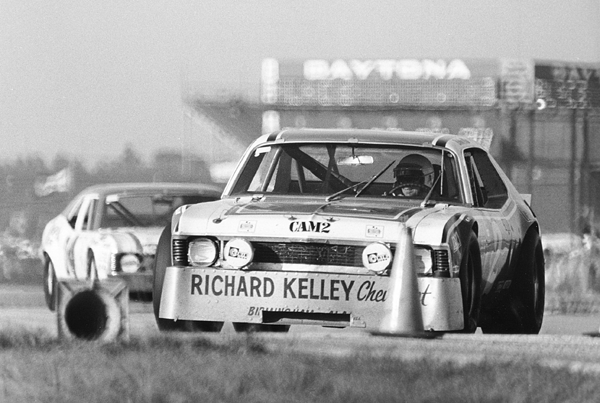
Last edited:
1964 Indy Parnelli Jones


Stirling Moss and Juan Manuel Fangio fight for the lead of the 1955 Monaco Grand Prix



Stirling Moss and Juan Manuel Fangio fight for the lead of the 1955 Monaco Grand Prix



TIM FLOCK AND HIS MONKEY JOCKO FLOCKO


1st NASCAR champs 1948: Red Vogt-mech, Red Byron - driver.

1947-Red Byron wins Martinsville, Va. The tracks first race: 9-7-1947

The Legendary Curtis Turner



Fireball Roberts leads Banjo Matthews...Modified Sportsman race, '55.



Herb Thomas on Daytona Beach. (1952) Fireball Roberts 1960
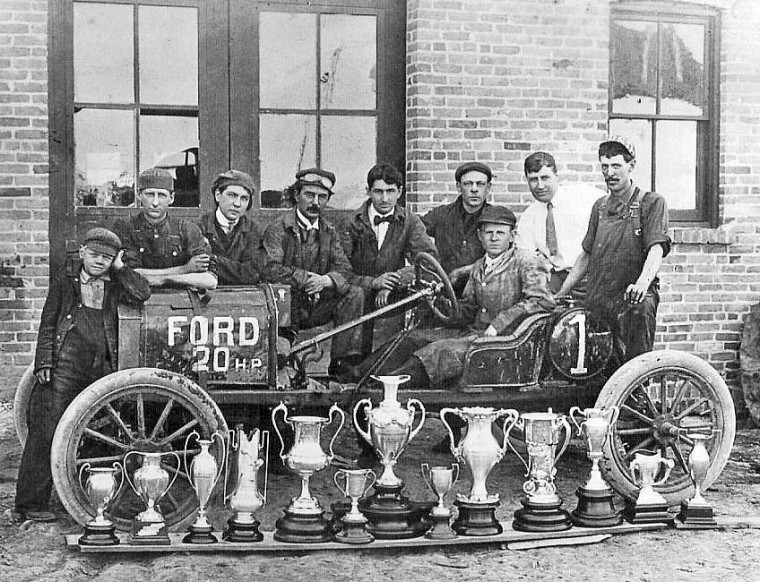
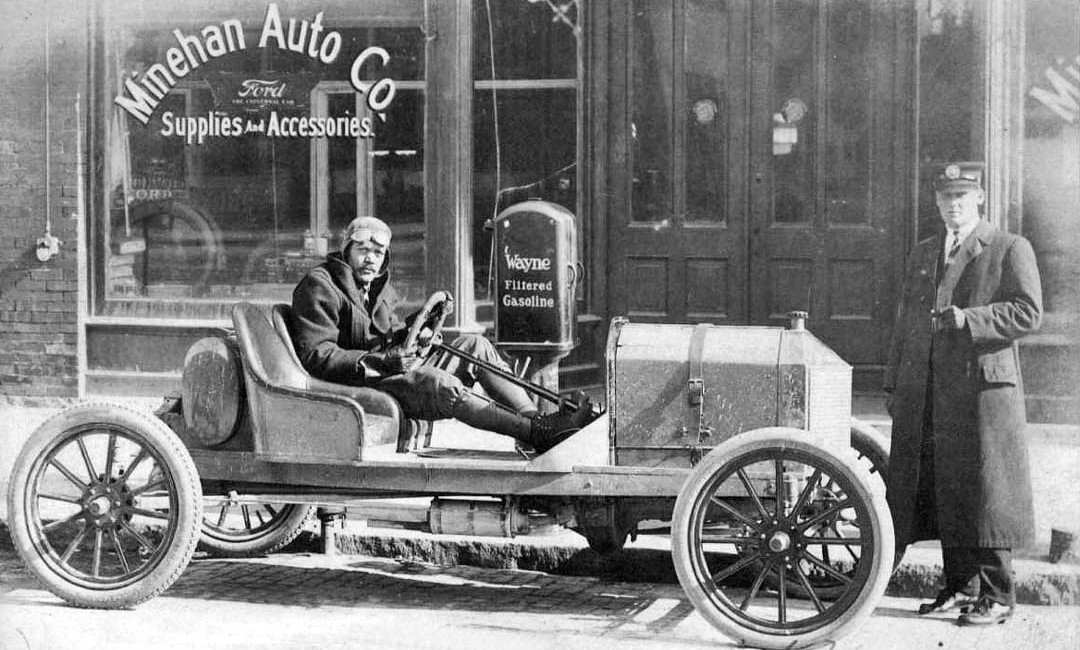
1963 Chevrolet Corvette GS-II, an experimental car that clocked 198 mph, but never raced. 1964 Chaparral..hmm








Mark Martin and his father Julian Martin
Last edited:

(Courtesy of the Ford Racing Archives) Darlington, SC, May 8, 1965. Junior Johnson (right in photo, on pole) and Marvin Panch (left of photo, 2nd place starter) lean on each other at the start of the Rebel 300 at Darlington Raceway. Johnson would dominate the race and go on to win, while Panch crashed out. Ned Jarrett would win the famed Southern 500 later that year in his '65 Ford. [Note Falstaff Beer sign in turn four; Falstaff was the sponsor of the season's champion prize money before Winston.
FLRacingFan
Team Owner
lol Nice hair.


Mark Martin and his father Julian Martin
perm gone wrong.lol Nice hair.



Roger Penske ZEREX Special 1963 Roger Penske in his Telar Special Cooper at Marlboro 1962
be9ak7ts16
Johali Lives
Bobw
Team Owner
- Joined
- Jan 22, 2013
- Messages
- 13,283
- Points
- 883
Linda certainly had some nice t-t-t-teeth, yeah teeth didn't she?
be9ak7ts16
Johali Lives
be9ak7ts16
Johali Lives
be9ak7ts16
Johali Lives
be9ak7ts16
Johali Lives
Where has SOI gone?
be9ak7ts16
Johali Lives
His last post was March 14.Where has SOI gone?


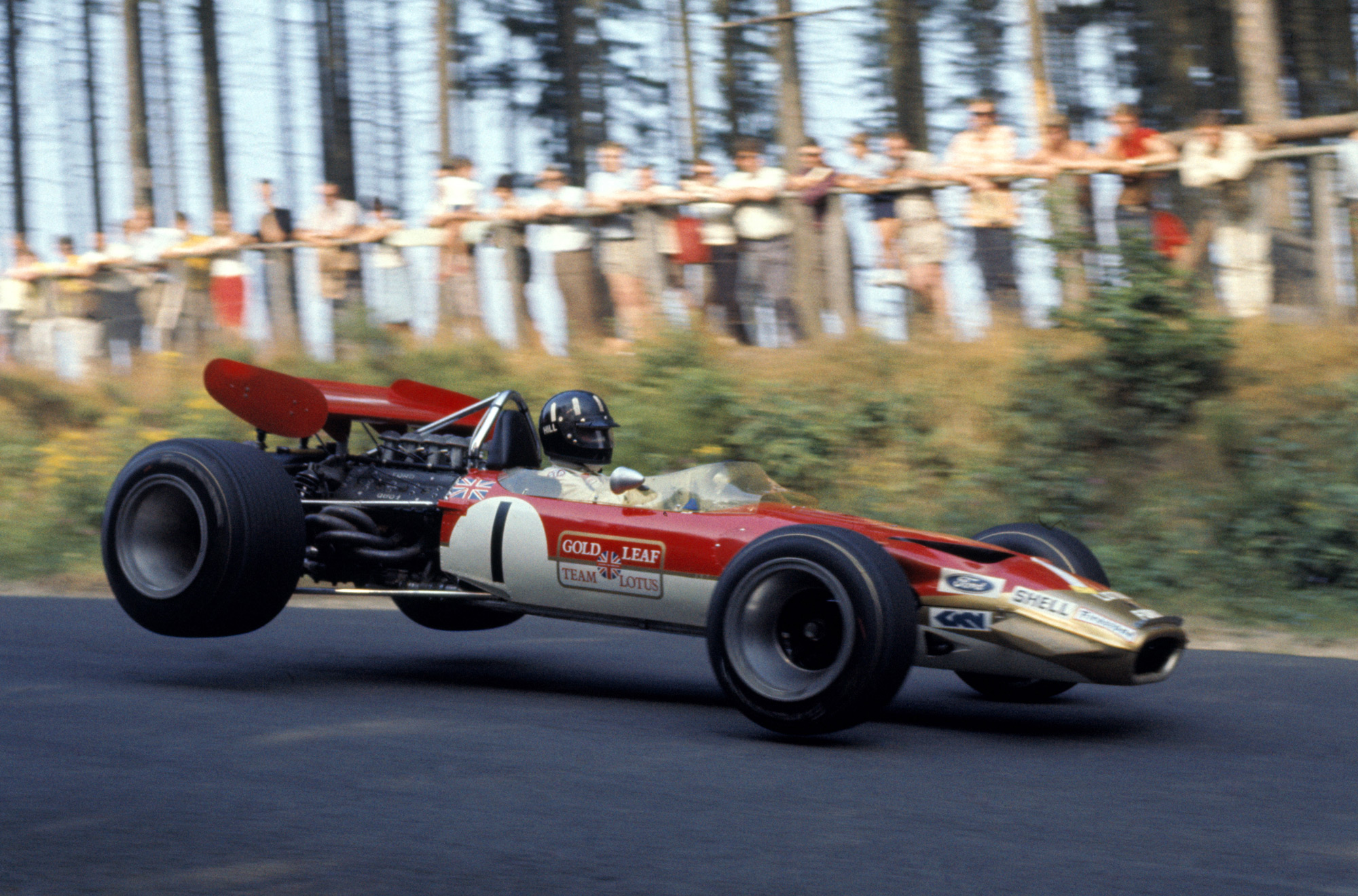
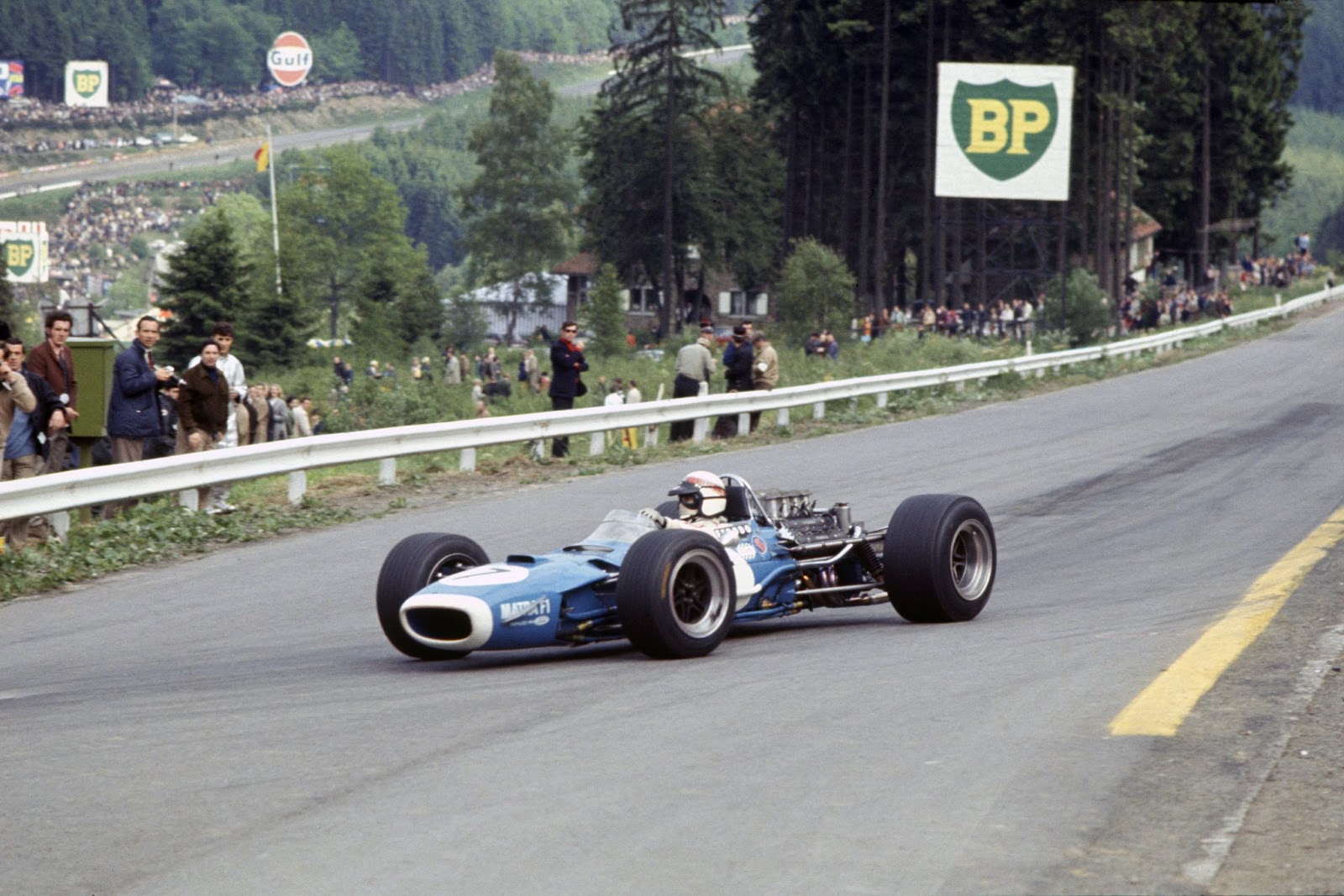

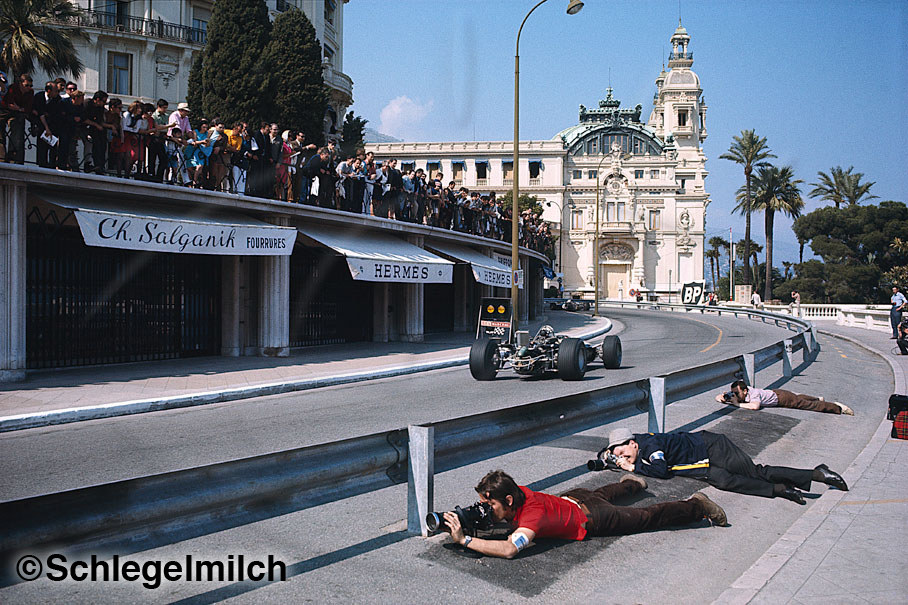










 [URL='http://porelpiano.blogspot.com.es/2011/07/timo-makinen-mini.html']
[URL='http://porelpiano.blogspot.com.es/2011/07/timo-makinen-mini.html']


